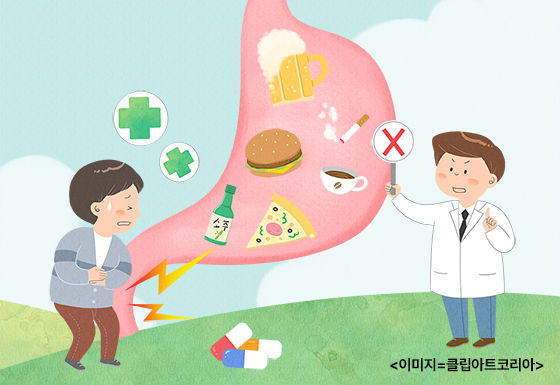The number of deaths in Korea from cancer (malignancy) is increasing every year. According to the “Statistical Results for Causes of Death in 2020” announced by the National Bureau of Statistics, the mortality rate by cancer site was calculated as the highest in the order of lung cancer, liver cancer and cancer of the colorectal. ) increased.
What is cancer?
The smallest unit that makes up the human body is called a cell. Normally, cells divide for intracellular regulatory functions, grow, die and disappear to maintain cell number balance. However, when a cell’s gene changes for various reasons, the cell changes abnormally, matures incompletely and proliferates excessively, which can be termed cancer.
Are there specific parts of the body where cancer develops?
Cancer can occur anywhere in the body, and depending on race, country, gender, age, lifestyle, and diet, cancer can occur in various parts of the body.
How are cancer and cancers different?
A tumor is an umbrella term for all abnormally formed masses. In other words, all or cancers. However, these tumors can be broadly divided into benign and malignant, and the malignant tumor is cancer. A benign tumor can cause problems in appearance or inconvenience in life depending on its location, but it does not have an important significance as it affects life.
What are the characteristics of cancer?
Cancer has very different characteristics from a biologically normal cell or tissue.
First, cancer originates from a single cell. In other words, when a cell undergoes several mutations and transforms into a cancer cell, it continues to divide and multiply to turn into cancer.
Second, once the cancer has developed, it is not subject to normal growth control. Normal tissue no longer grows when it reaches a certain size, but the cancer continues to grow, sometimes forming very large masses.
Third, it is invasive growth. This means that as the cancer grows, it burrows into surrounding normal tissue and sometimes infiltrates large blood vessels or tissues around the cancer, making surgical resection difficult.
Fourthly, cancer has the characteristic of an undifferentiated state. Normal tissue has histological features unique to each organ, while cancer does not. This is called undifferentiated, and due to this undifferentiated feature, in some cases, the primary site may not be known even after a biopsy is performed.
The last feature is metastasis. Metastasis is the spread of cancer to tissues that are not directly related to it.Once metastasis is found, it is usually classified as terminal cancer. Therefore, the presence or absence of metastases is very important in determining the treatment policy.

Common Causes of Cancer
① Smoking
– Cigarette smoke contains more than 24 chemicals that can cause cancer
– Closely related to cancer of the mouth, larynx, esophagus, stomach, pancreas, kidney and bladder
② drink
– Alcohol consumption increases the risk of cancer of the mouth, pharynx, larynx, esophagus, colorectal, liver and breast
– The risk of cancer is proportional to the amount of alcohol consumed.
③ Occupational exposure
– Exposure to certain chemicals in the workplace can cause cancer
– Lung cancer is the most common occupational cancer and skin cancer, urinary tract cancer, nose cancer and pleural cancer can also occur.
④ infection
– It is estimated that 1 to 2 in 10 cancer patients develop cancer due to a chronic infection.
– Hepatitis B virus (HBV), hepatitis C virus (HCV), human papilloma virus (HPV), Helicobacter pylori (H. pylori), Epstein-Barr virus (EBV), fluke (C. sinensis), etc. It belongs to Korea Cancer Society designated group 1 carcinogen and Kaposi’s sarcoma herpes virus (KSHV) and human T cell virus (HTLV-1) can cause cancer.
⑤ radiation
– Radiation causes chromosome splitting and translocation and, rarely, point mutations, causing genetic damage that leads to cancer.
– Leukemia and thyroid cancer are common, but in reality any cell can be converted into cancer cells when exposed to a lot of radiation.
⑥ Hormones
– Female hormones, childbirth and menopause affect the incidence of endometrial cancer, ovarian cancer and breast cancer
Oral contraceptives are known to slightly increase the risk of breast cancer, but reduce the risk of ovarian and endometrial cancer.
⑦ Diet
– About 30% of cancers are related to diet and nutrition
– Excessive salt intake increases blood pressure and increases the incidence of gastric cancer
– A high calorie / high fat diet increases the incidence of colorectal cancer, breast cancer, prostate cancer, endometrial cancer, etc.
– Proper exercise, weight management and the consumption of fresh vegetables reduce the risk of oral cancer, lung cancer and cervical cancer
–


